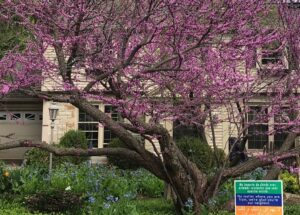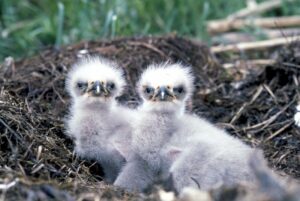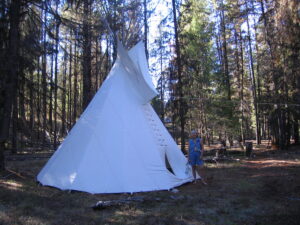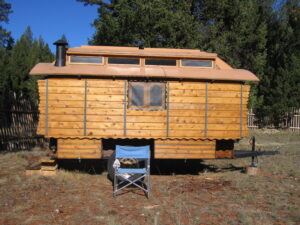
As the siege of global instability continues, many of us are experiencing increasing levels of anxiety, anger, depression, and despair. From the beginning of human history, upheaval and change have sent entire populations into states of helplessness, frustration, exhaustion, and fear. If you are currently being derailed by powerful feelings, please know you are not alone. Your feelings are not to be disregarded or dismissed. Our lives and our planet are being shaken by enormous shifts. The good news is that we have the capacity to adapt and transform.
When we feel powerless and overwhelmed, how can we reawaken our spirits, uncover new possibilities in intractable problems, and enliven our sense of hope? Where can we find new resources to meet the challenges of our time?
 Our deep human past may hold the answers. Ancient myths—so crucial to every thriving civilization—remind us of who we have been, what we have learned, and how we have prevailed. Myths offer deep insight about human travails, illustrate the internal and external obstacles we encounter on the road to developing resilience and show where we can find help. Refined and retold over millennia, they are nutritive stories that feed us an infusion of trustworthy and eternal wisdom.
Our deep human past may hold the answers. Ancient myths—so crucial to every thriving civilization—remind us of who we have been, what we have learned, and how we have prevailed. Myths offer deep insight about human travails, illustrate the internal and external obstacles we encounter on the road to developing resilience and show where we can find help. Refined and retold over millennia, they are nutritive stories that feed us an infusion of trustworthy and eternal wisdom.
Imagine the world’s great myths as a vast library containing a record of human hardship and struggle, heroic undertakings and surprising rewards. Mythic stories depict archetypal, universal themes concerning our most basic instincts and emotions—fear, greed, bravery, family relationships, power, injustice, conscience, our relationship to nature and the natural world—situations and dilemmas not unfamiliar to our modern psyches. These myths survive, sometimes in the form of popular entertainment, and continue to absorb us.
They highlight issues that are still ripe in our lives. An entire industry exists to mine ancient myths for television and movie scripts. Consider how stories about family rivalries, sibling jealousy, corrupt leaders, dissolving empires, and alien invasions fill our imaginations. The old myths reappear in new forms, often so disguised we barely recognize them. Narcissism, a mental health diagnosis much discussed in public forums during the past four years, is a term derived from the Greek myth of Narcissus. To return to the original myth is to understand the tragic and sorrowful story of a beautiful youth who falls in love with his own reflection in a spring and, unable to love others, dies pining for his own image.
The underworld and overworld. Both have always existed—in myth, dream, and reality. In our lifetimes we navigate each domain, the dark and the light. Lately, I’ve been investigating what the metaphor of descent, a common motif in myths, might reveal.
 Descent into the underworld appears in many myths as part of a transformative process that is an initiatory rite for our souls. “Katabasis” is the Greek term used to describe “going below.” To go below means to be separated from the daylight ordinary world. Symbolically, it signifies being cut off from one’s usual resources and helpers; it means finding a way to see and respond when the familiar falls away. (Imagine Jonah in the belly of the whale or Alice down a rabbit hole.)
Descent into the underworld appears in many myths as part of a transformative process that is an initiatory rite for our souls. “Katabasis” is the Greek term used to describe “going below.” To go below means to be separated from the daylight ordinary world. Symbolically, it signifies being cut off from one’s usual resources and helpers; it means finding a way to see and respond when the familiar falls away. (Imagine Jonah in the belly of the whale or Alice down a rabbit hole.)
Storyteller and mythographer Michael Meade reminds us that in the underground, in the darkness and unfamiliar territory of “below,” renewal occurs. Meade points out that in myths, going beneath the earth can be understood as gaining access to forgotten, secret or hidden wisdom buried in our depths. What may feel to us as “being in the dark” is a sacred space deep within us rich with new or cut-off energies.
“Wisdom can reveal the light hidden in dark times; but it requires that we face the darkness in ourselves. People may desire pearls of wisdom, yet most are unwilling to descend to the depths where the pearls wait to be found. Wisdom involves a necessary descent into the depths of life, for that alone can produce ‘lived knowledge’ and a unified vision.”—Michael Meade, Fate and Destiny
The depths in the subterranean basement of our unconscious are where archetypal and instinctual knowledge percolate. Think of seeds incubating beneath the soil, stirring with new life, or the multitude of invisible creatures at work preparing the soil for regeneration. Think of dream images that come in the midnight hours to awaken our curiosity and bring fresh insights to our conscious minds.
 A classic Greek myth that features descent as one of its key motifs is the story of Demeter and Persephone. Attributed to Homer, author of the Iliad and Odyssey, the “Homeric Hymn to Demeter,” recounts the story of the rape and abduction of Persephone, daughter of Demeter, goddess of agriculture and fertility. The myth has many variations and interpretations, but simply told, the story unfolds as follows:
A classic Greek myth that features descent as one of its key motifs is the story of Demeter and Persephone. Attributed to Homer, author of the Iliad and Odyssey, the “Homeric Hymn to Demeter,” recounts the story of the rape and abduction of Persephone, daughter of Demeter, goddess of agriculture and fertility. The myth has many variations and interpretations, but simply told, the story unfolds as follows:
One day while Persephone is picking flowers in a meadow, the ground beneath her begins to shake and splits open. From the crack in the earth emerges Hades, driving his horse-drawn black chariot. Hades, most powerful god of the Underworld, brother of sky god Zeus, kidnaps the young maiden and drags her into the depths.
In the above world, her mother, Demeter, grief-stricken, flies across the land inconsolably crying out for her child. As the goddess of harvest and grain, Demeter’s lamentations and rage at Zeus for allowing this event to happen cause a blight over the earth. Crops wither, fields go fallow.
Persephone’s cries for help fade. Soon the mother can no longer hear her daughter. In the Underworld, the daughter can no longer hear her mother. Here the descent is neither expected nor made by choice. It is a brutal act of male power and privilege. But does the story convey a truth? In life as in myth, we must separate from the all-embracing, all-protective mother love.
 As the story resolves, Zeus pleads with Hades to return Persephone to her mother. Hades agrees but tricks Persephone into eating a pomegranate seed, an act that consigns her to have to return to live with him for one-third of every year as Queen of the Underworld.
As the story resolves, Zeus pleads with Hades to return Persephone to her mother. Hades agrees but tricks Persephone into eating a pomegranate seed, an act that consigns her to have to return to live with him for one-third of every year as Queen of the Underworld.
The violent separation and ultimate reuniting of Demeter and Persephone have many dimensions: it can be seen as a story about the complexity of a mother-daughter relationship, about maternal love that is too binding, and about a daughter’s need for maternal love juxtaposed to her need to discover her own resources and strength.
Our descent into the “below” might feel like death, as depression sometimes does. Life, energy, the ordinary world might feel forever lost and irrecoverable, but the great myths tell us otherwise. A descent is often followed by an ascent. When we return to the upper world, we bring with us new life. This is the meaning of Persephone’s reunion with Demeter.
The myth of Demeter and Persephone feels particularly relevant at this time. Many of us, myself included, are looking for wisdom to be garnered when we are plunged into darkness. Inhabiting this troubling new terrain, our vision must adjust. In the underworld, the future is murky and unknowable, but the myth is a reminder that the stolen daughter does not die in Hades—she escapes, matures, and thrives. She learns to see in the dark.
We are not given details about Persephone’s experience in Hades, except that she obediently serves her four months as Queen of the Underworld. What does she see below? What does she learn in the darkness? I’ve always wondered what riches, what gems, what secrets might be visible in the strata beneath the earth.
Close your eyes for a moment. What do you see in the dark?
Persephone is allowed to return to her mother for two-thirds of the year, her annual emergence generating the springtime renewal and flourishing of the land. Like the natural world, like history itself, we, too, experience cycles of flow and dormancy, depression and aliveness. We might take from this a lesson about patience with ourselves as we explore new, unfamiliar, and even frightening dimensions of ourselves in a world turned upside down.
The next time you feel the tug of despair or an encroaching mood about to pull you below, the next time you are tempted to lament our dark times, remember how the terrible winter of Demeter’s grief was followed Persephone’s re-emergence into the world, and with her, the blossoming of the trees and fields.
This post appeared in a slightly different form on Dale’s blog on Psychology Today. You can find all of Dale’s blog posts for Psychology Today at
If you enjoyed this post, you may enjoy these other related posts about myths: “Revisiting the Myth of Narcissus and ‘Healthy Narcissism,’” “Given Away: The Plight of the Wounded Feminine,” and “The Hero’s Journey in the Time of COVID.”








